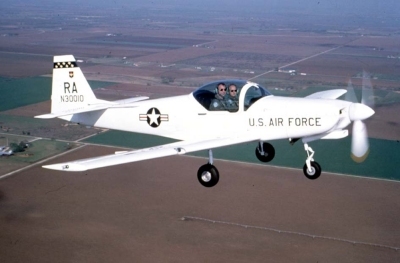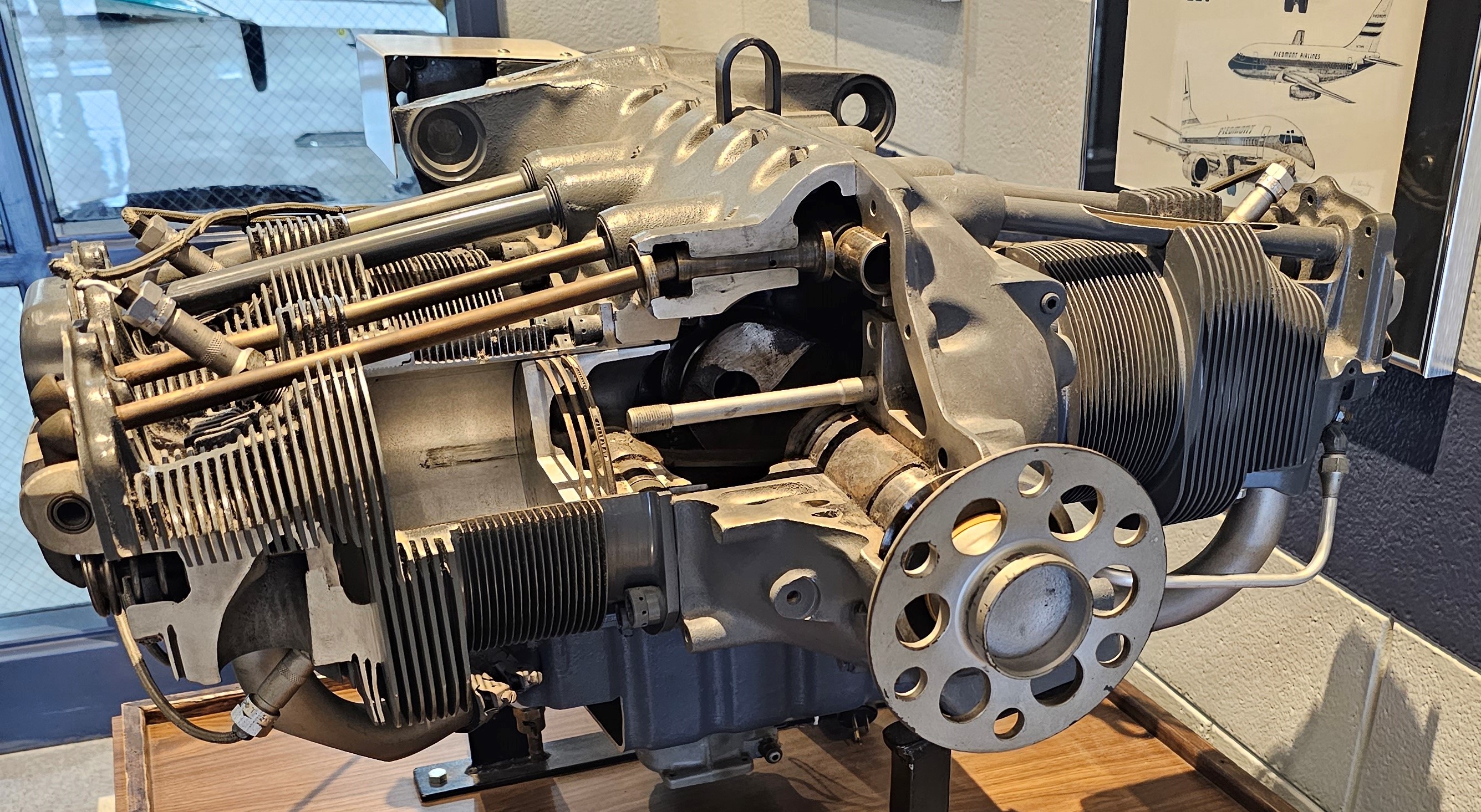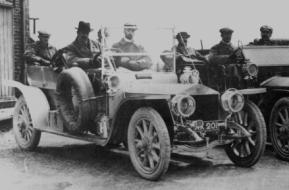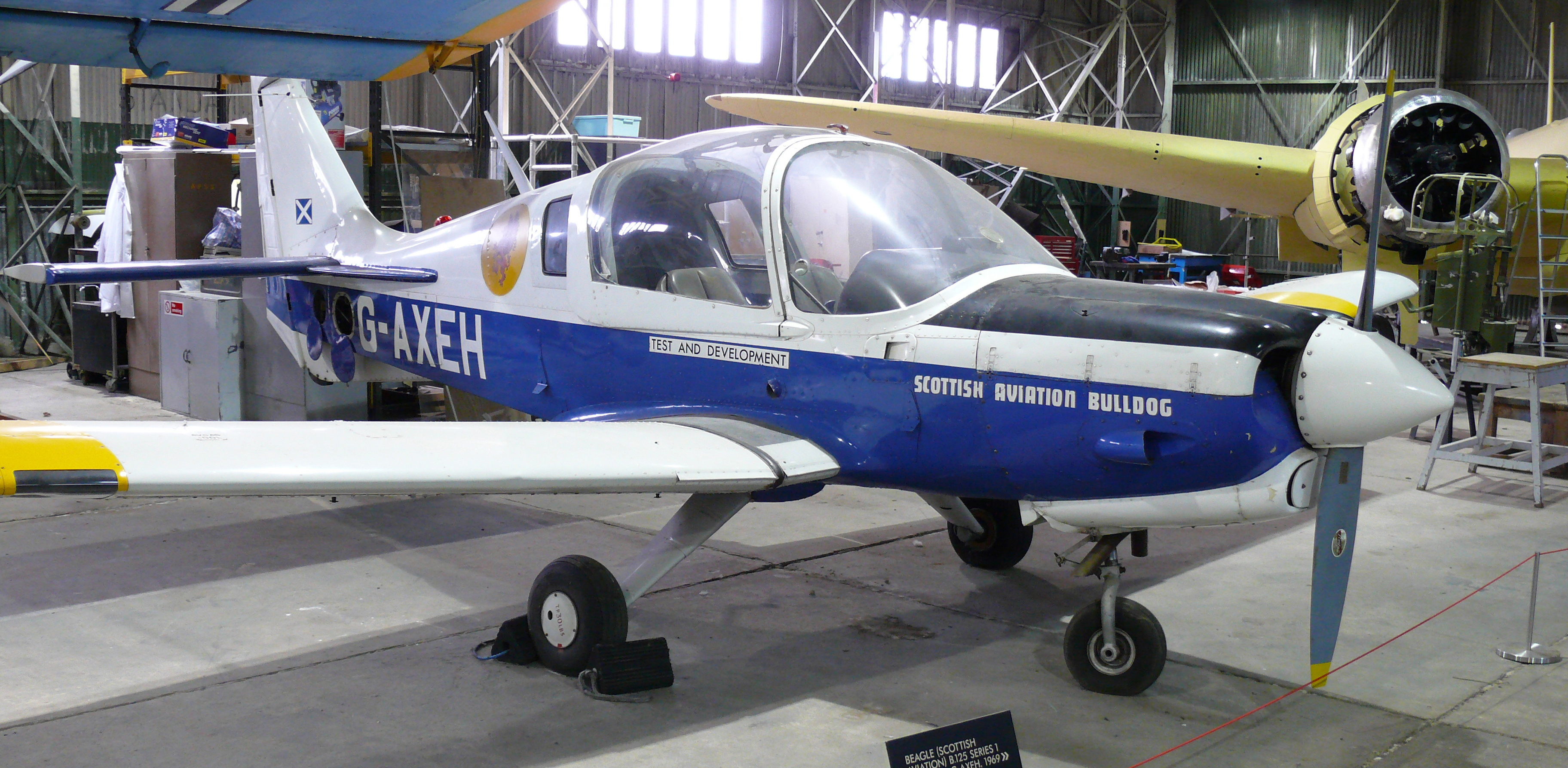|
T-3 Firefly
The Slingsby T67 Firefly, originally produced as the Fournier RF-6, is a two-seat aerobatic training aircraft, built by Slingsby Aviation in Kirkbymoorside, Yorkshire, England. It has been used as a trainer aircraft by several armed forces, as well as civilian operators. In the mid-1990s, the aircraft became controversial in the United States after three fatal accidents during US Air Force training operations. The Firefly has poor spin recovery, and has been involved in at least 36 fatal accidents. Development The RF-6 was designed by , and first flew on 12 March 1974. An all-wooden construction, it featured a high aspect-ratio wing echoing his earlier motorglider designs. Fournier set up his own factory at Nitray, near Tours to manufacture the design, but after only around 40 had been built, the exercise proved financially unviable, and he was forced to close down production. A four-seat version was under development by as the RF-6C, but this demonstrated serious stability p ... [...More Info...] [...Related Items...] OR: [Wikipedia] [Google] [Baidu] |
WikiProject Aircraft
A WikiProject, or Wikiproject, is an affinity group for contributors with shared goals within the Wikimedia movement. WikiProjects are prevalent within the largest wiki, Wikipedia, and exist to varying degrees within Wikimedia project, sibling projects such as Wiktionary, Wikiquote, Wikidata, and Wikisource. They also exist in different languages, and translation of articles is a form of their collaboration. During the COVID-19 pandemic, CBS News noted the role of Wikipedia's WikiProject Medicine in maintaining the accuracy of articles related to the disease. Another WikiProject that has drawn attention is WikiProject Women Scientists, which was profiled by ''Smithsonian Magazine, Smithsonian'' for its efforts to improve coverage of women scientists which the profile noted had "helped increase the number of female scientists on Wikipedia from around 1,600 to over 5,000". On Wikipedia Some Wikipedia WikiProjects are substantial enough to engage in cooperative activities with outsi ... [...More Info...] [...Related Items...] OR: [Wikipedia] [Google] [Baidu] |
RAF Barkston Heath
Royal Air Force Barkston Heath or RAF Barkston Heath is a Royal Air Force Relief Landing Ground under the command of RAF Cranwell near Grantham, Lincolnshire, England. RAF Barkston Heath is the home of 57 Sqn's B Flight of No. 3 Flying Training School RAF (3 FTS). For a period between approximately 1995 and 2010, it operated the Slingsby T67M260 Firefly, followed by the Grob Tutor T.1 operated between 2010 and 2018. No. 3 FTS currently provide elementary flying training for RAF and Royal Navy students on the Grob Prefect T.1. A secondary role of RAF Barkston Heath is as a Relief Landing Ground for the flying training activities at RAF Cranwell. History Barkston Heath was constructed in 1936 and was initially used as a satellite station for RAF Cranwell. United States Army Air Forces use In late 1943, Barkston Heath was made available to the United States Army Air Force's Ninth Air Force. It was earmarked for basing troop carrier units scheduled to be transferred fro ... [...More Info...] [...Related Items...] OR: [Wikipedia] [Google] [Baidu] |
T-3A Firefly
The Slingsby T67 Firefly, originally produced as the Fournier RF-6, is a two-seat aerobatic training aircraft, built by Slingsby Aviation in Kirkbymoorside, Yorkshire, England. It has been used as a trainer aircraft by several armed forces, as well as civilian operators. In the mid-1990s, the aircraft became controversial in the United States after three fatal accidents during US Air Force training operations. The Firefly has poor spin recovery, and has been involved in at least 36 fatal accidents. Development The RF-6 was designed by , and first flew on 12 March 1974. An all-wooden construction, it featured a high aspect-ratio wing echoing his earlier motorglider designs. Fournier set up his own factory at Nitray, near Tours to manufacture the design, but after only around 40 had been built, the exercise proved financially unviable, and he was forced to close down production. A four-seat version was under development by as the RF-6C, but this demonstrated serious stability p ... [...More Info...] [...Related Items...] OR: [Wikipedia] [Google] [Baidu] |
Glass-reinforced Plastic
Fiberglass (American English) or fibreglass ( Commonwealth English) is a common type of fiber-reinforced plastic using glass fiber. The fibers may be randomly arranged, flattened into a sheet called a chopped strand mat, or woven into glass cloth. The plastic matrix may be a thermoset polymer matrix—most often based on thermosetting polymers such as epoxy, polyester resin, or vinyl ester resin—or a thermoplastic. Cheaper and more flexible than carbon fiber, it is stronger than many metals by weight, non- magnetic, non- conductive, transparent to electromagnetic radiation, can be molded into complex shapes, and is chemically inert under many circumstances. Applications include aircraft, boats, automobiles, bath tubs and enclosures, swimming pools, hot tubs, septic tanks, water tanks, roofing, pipes, cladding, orthopedic casts, surfboards, and external door skins. Other common names for fiberglass are glass-reinforced plastic (GRP), glass-fiber reinforced plas ... [...More Info...] [...Related Items...] OR: [Wikipedia] [Google] [Baidu] |
Lycoming O-320
The Lycoming O-320 is a large family of naturally aspirated, air-cooled, flat four engine, horizontally-opposed four-cylinder, direct-drive engines produced by Lycoming Engines. Introduced in 1953, it is commonly used on light aircraft such as the Cessna 172 and Piper Cherokee, and remains in production as of 2024. Different variants are rated for 150 or 160 horsepower (112 or 119 kilowatts). Design and development The O-320 family of engines includes the carburetor, carbureted O-320, the fuel-injection, fuel-injected IO-320, the inverted mount, fuel-injected AIO-320 and the aerobatics, aerobatic, fuel-injected AEIO-320 series. The LIO-320 is a "left-handed" version with the crankshaft rotating in the opposite direction for use on twin-engined aircraft to eliminate the critical engine. The first O-320 (with no suffix) was Federal Aviation Administration, FAA Type certification, certified on 28 July 1953 to CAR 13 effective 5 March 1952; this same engine was later re-designa ... [...More Info...] [...Related Items...] OR: [Wikipedia] [Google] [Baidu] |
Lycoming O-235
The Lycoming O-235 is a family of four-cylinder, air-cooled, horizontally opposed, piston aircraft engines that produce , derived from the earlier O-233 engine.Textron Lycoming: ''Operator's Manual, Textron Lycoming Aircraft Engines, Series O-235 & O-290'', 4th Edition January 1988, Pages 2-1 & 2-4, Stock # 60297-9, Textron Lycoming. Well-known designs that use versions of the O-235 included the Cessna 152, Grumman American AA-1 series, Beechcraft Model 77 Skipper, Piper PA-38 Tomahawk, American Champion Citabria, Piper Clipper, and the Piper PA-22-108 Colt. Development The engines are all carburetor A carburetor (also spelled carburettor or carburetter) is a device used by a gasoline internal combustion engine to control and mix air and fuel entering the engine. The primary method of adding fuel to the intake air is through the Ventu ...-equipped, feature dual magneto ignition and have a displacement of 233 cubic inches (3.82 L). The first O-235 model was ce ... [...More Info...] [...Related Items...] OR: [Wikipedia] [Google] [Baidu] |
Continental O-200
The Continental C90 and O-200 are a family of air-cooled, horizontally opposed, four-cylinder, direct-drive aircraft engines of 201 in3 (3.29 L) displacement, producing between 90 and 100 horsepower (67 and 75 kW).''Federal Aviation AdministrationType certificate data sheet no. E-252.'' Revision 34. (27 June 2013) Built by Continental Motors these engines are used in many light aircraft designs of the United States, including the early Piper PA-18 Super Cub,''Aircraft specification no. 1A2.'' Revision 37. (Sep. 4, 1996.) Department of Transportation. Federal Aviation Administration. the Champion 7EC,''Aircraft specification no. A-759.'' Revision 67. (Jun. 3, 2005.) Department of Transportation. Federal Aviation Administration. the Alon Aircoupe,''Type certificate date sheet no. A-787.'' Revision 33. (Jul. 14, 2005.) Department of Transportation. Federal Aviation Administration. and the Cessna 150.''Type certificate data sheet no. 3A19.'' Revision 44. (Mar ... [...More Info...] [...Related Items...] OR: [Wikipedia] [Google] [Baidu] |
Rolls-Royce Limited
Rolls-Royce Limited was a British luxury car and later an aero-engine manufacturing business established in 1904 in Manchester by the partnership of Charles Rolls and Henry Royce. Building on Royce's good reputation established with his Crane (machine), cranes, they quickly developed a reputation for superior engineering by manufacturing luxury cars. The business was incorporated as "Rolls-Royce Limited" in 1906, and a new factory in Derby was opened in 1908. The First World War brought the company into manufacturing aero-engines. Joint development of jet engines began in 1940, and they entered production in 1944. Rolls-Royce has since built an enduring reputation for the development and manufacturing of engines for military and commercial aircraft. In the late 1960s, Rolls-Royce was adversely affected by the mismanaged development of its advanced Rolls-Royce RB211, RB211 jet engine and consequent cost over-runs, though it ultimately proved a great success. In 1971, the owners w ... [...More Info...] [...Related Items...] OR: [Wikipedia] [Google] [Baidu] |
Slingsby
Slingsby may refer to: People * Slingsby (surname) * Slingsby Baronets Places * Slingsby, North Yorkshire * Slingsby Channel, a strait in the Queen Charlotte Strait region of the Central Coast of British Columbia, Canada Other uses * Slingsby Aviation, formerly Slingsby Sailplanes, a manufacturer of gliders and other aircraft {{disambiguation ... [...More Info...] [...Related Items...] OR: [Wikipedia] [Google] [Baidu] |
UPRT
Upset Prevention and Recovery Training (UPRT) is a combination of theoretical and practical training given to aircraft pilots to enable the pilot to prevent, recognise and recover from unusual attitudes and unexpected situations. In EASA states, all pilots undergoing training for the CPL, ATPL and MPL (multi-crew pilot licence) are given a basic UPRT course. Advanced UPRT (AUPRT or commonly just UPRT) refers to a regulated course of at least 5 hours theoretical instruction and 3 hours practical instruction. Since December 2019, this course is mandatory for all pilots before their first type rating course in multi-pilot operations. While the AUPRT course may be undertaken in an aerobatic aircraft, aerobatic training does not replace a UPRT course. Class- or type-related UPRT addresses a particular class or type of aircraft. In EASA states, airlines must include upset prevention and recovery training as part of their recurrent training, covering the syllabus every three years. ... [...More Info...] [...Related Items...] OR: [Wikipedia] [Google] [Baidu] |
Scottish Aviation Bulldog
The Scottish Aviation Bulldog is a British two-seat side-by-side (with optional third seat) training aircraft designed by Beagle Aircraft as the B.125 Bulldog. The prototype Bulldog flew on 19 May 1969 at Shoreham Airport. The first order for the type was for 78 from the Swedish Air Board. Before any production aircraft were built, Beagle Aircraft ceased trading and the production rights for the aircraft, with the Swedish order, were taken over by Scottish Aviation (Bulldog) Limited. All subsequent aircraft were built at Prestwick Airport by Scottish Aviation, and later by British Aerospace. Operational history Sweden The first 58 aircraft (known as the SK 61A and SK 61B) were delivered to the Swedish Air Force in 1971. Twenty more aircraft were delivered to the Swedish Army as FPL 61C in 1972, although these were transferred to the Air Force in 1989 as SK 61C. By 2001 all the Swedish aircraft had been withdrawn from military service. 26 were bought in 2004 by the Hungarian ... [...More Info...] [...Related Items...] OR: [Wikipedia] [Google] [Baidu] |







